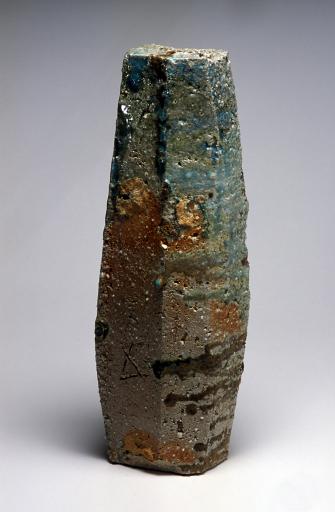faceted flower vase, Tsujimura Shirō
Artwork Overview
Tsujimura Shirō, artist
born 1947
faceted flower vase,
1999
Where object was made: Japan
Material/technique: Iga ware; stoneware
Dimensions:
Object Height/Width/Depth (Height x Width x Depth): 45 x 18 x 13 cm
Weight (Weight): 21.5 lbs
Object Height/Width/Depth (Height x Width x Depth): 45 x 18 x 13 cm
Weight (Weight): 21.5 lbs
Credit line: Museum purchase: through the generous support of Ross and Marianna Beach, Lee Ketzel, Dr. and Mrs. Kasumi Arakawa, Biddy and Gordon Hurlbut and Friends of the Spencer Museum of Art
Accession number: 2001.0044
Not on display
If you wish to reproduce this image, please submit an image request




